How Much Weight Can a Garbage Truck Lift Safely
Discover how much weight a garbage truck can lift, including truck types, bin condition impact, and safety protocols. Click to learn more!
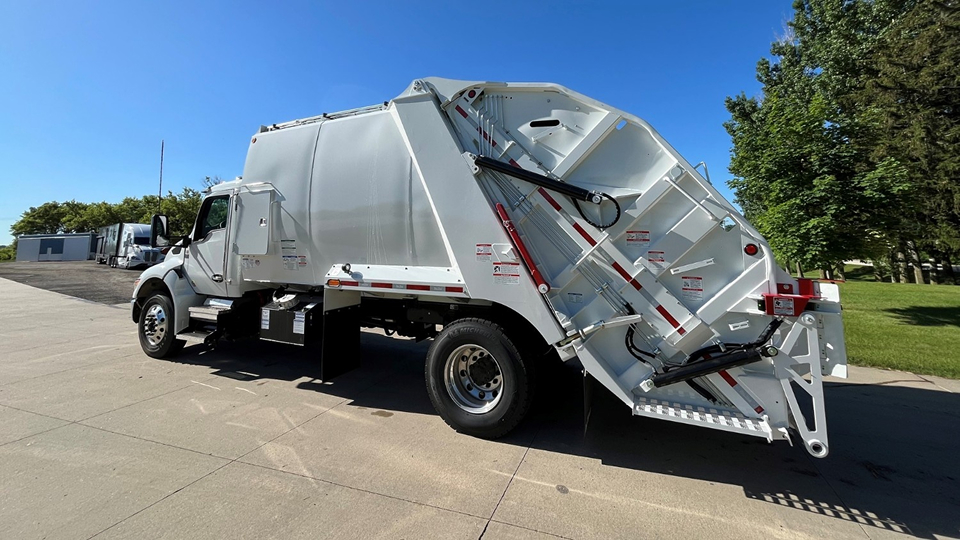
Discover how much weight a garbage truck can lift, including truck types, bin condition impact, and safety protocols. Click to learn more!

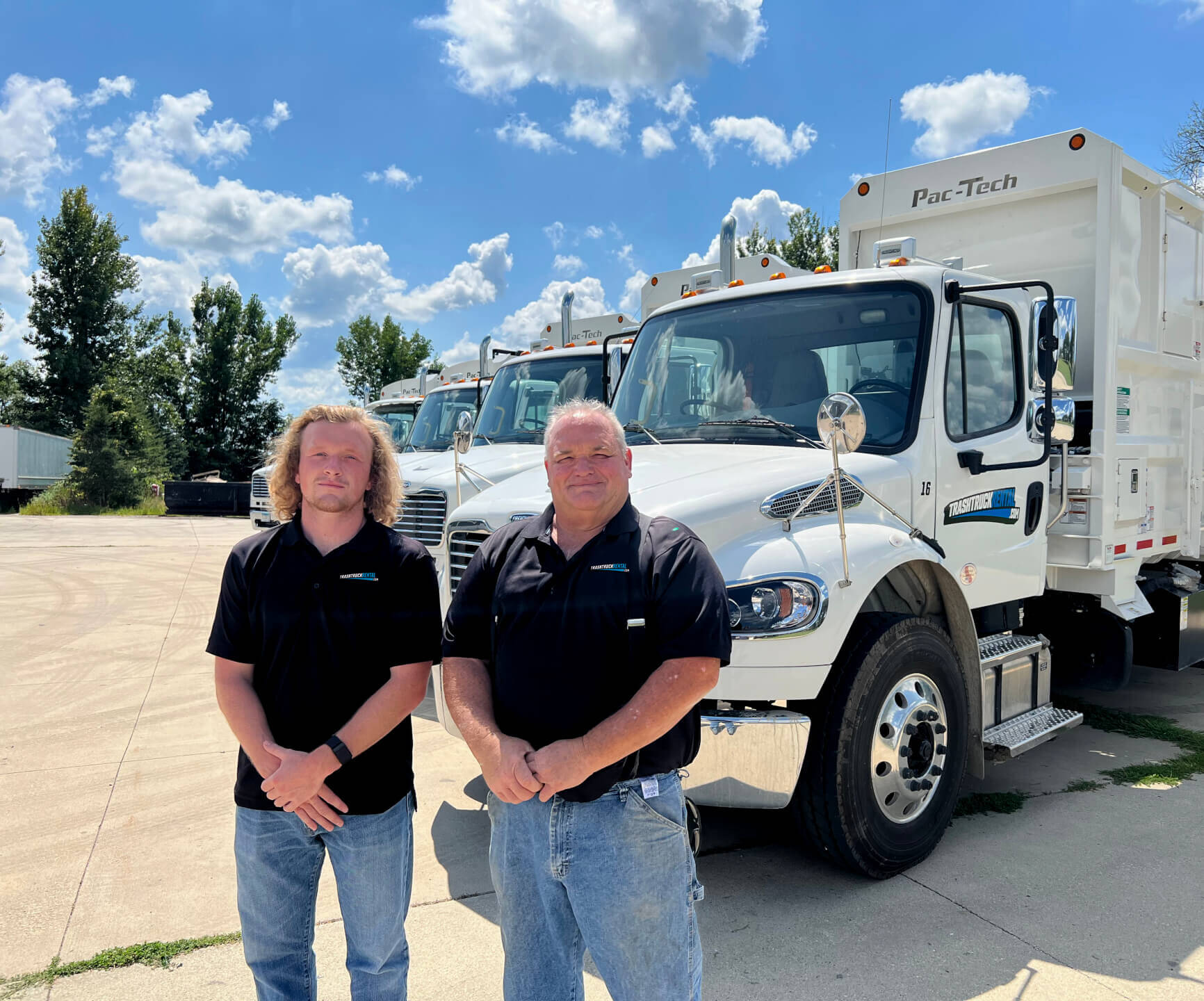
You've likely seen a garbage truck lift a dumpster with ease or a worker toss in heavy trash bags like it's nothing. These powerful machines work quietly behind the scenes, playing a key role in keeping our streets clean and cities running.
But have you ever wondered how much weight these machines can handle? It's a fair question when you think about all the trash we throw away every day, from food waste to heavy construction materials.
Knowing what these trucks can lift isn't just about big numbers. It helps you understand the innovative design, strict safety rules, and the hard work of the people who keep our neighborhoods clean and safe. It's a tough job, and these trucks and the teams behind them deserve some genuine appreciation.
Now that you’ve got the quick overview, let’s break things down further. What do terms like “lift” and “carry” actually mean when it comes to garbage trucks?
When you hear about how much weight a garbage truck can “lift,” it’s usually one of two things, both important to how the truck works.
Thanks to the compaction system, garbage trucks can squeeze trash down to make more space, letting them carry much more than regular trucks. Knowing both lift and carry limits helps you understand just how efficient and powerful these trucks are. Now, let’s understand the different truck types and their capacities.

The capacity of a garbage truck varies significantly based on its type and design. Here’s a look at the main players you’ll see on American streets and their typical lifting and carrying power:
Here’s a clear comparison of lifting and payload capacities across the main garbage truck types currently in use:
While these capacities show what trucks are built to handle, the actual limits are shaped by other important factors.
Also Read: Difference Between Dump Truck and Garbage Truck
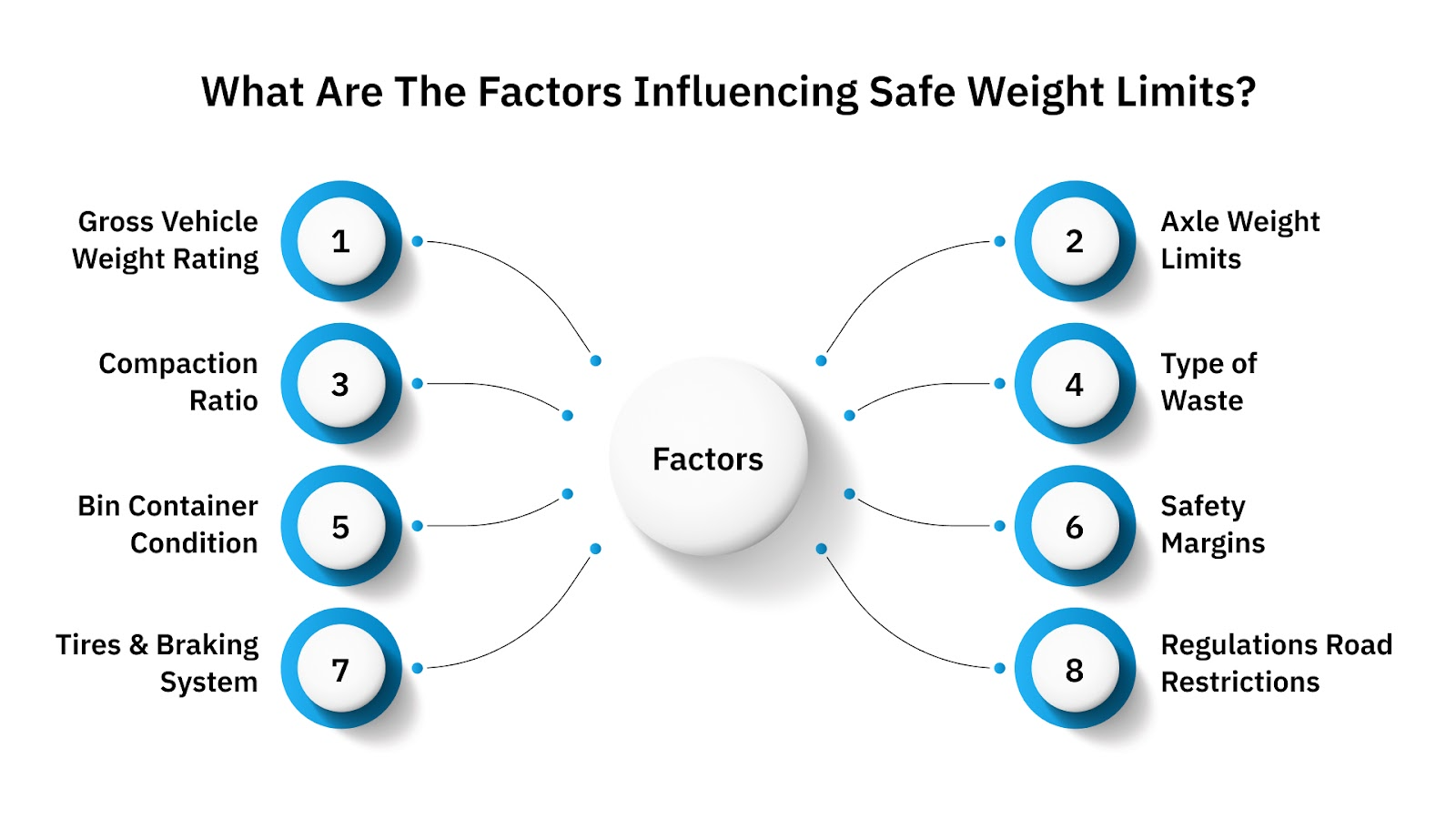
It’s not just about how strong the truck is. Several key factors affect how much weight your garbage truck can safely and legally carry:
This is the maximum operating weight of a vehicle as specified by the manufacturer, including the vehicle’s chassis, body, fuel, driver, and payload. In the U.S., heavy-duty garbage trucks often have GVWRs ranging from 50,000 to 80,000 pounds (25-40 tons). It is the absolute ceiling.
Federal and state laws in the US impose limits on how much weight can be placed on each axle. Even if a truck’s total GVWR allows a certain weight, uneven distribution or too much weight on one axle can make it illegal and unsafe, which is a common challenge for operators.
For compactor trucks, how efficiently the waste is crushed makes a huge difference. A higher compaction ratio means more waste (by weight) can fit into the same volume, maximizing the payload within legal limits.
Dense materials like construction debris, concrete, or wet organic waste weigh significantly more per cubic yard than lighter materials like cardboard or plastic. This impacts how quickly a truck reaches its weight limit versus its volume capacity.
The structural integrity and condition of the bins or dumpsters being lifted also play a role in safety. Cracked, damaged, or improperly loaded containers can fail during lifting, creating significant hazards for workers and equipment.
Manufacturers and operators build in safety margins. Trucks are designed to handle loads beyond their typical operational limits, but operating within the specified safe limits is crucial for equipment longevity and accident prevention.
The tires are the direct point of contact with the road and must have appropriate load ratings and be properly inflated to safely support the vehicle’s weight. The brakes also play a major role in keeping things safe. If the truck is overloaded, the brakes won’t work as well, which can be dangerous. Both the tires and brakes are built to handle a certain weight, and keeping them in good shape is key to safe driving.
Local regulations and road restrictions also dictate the weight limit for garbage trucks. Each jurisdiction may have specific weight restrictions in place to prevent excessive wear and tear on roads and bridges. These restrictions are established to maintain the integrity of infrastructure and reduce the risk of accidents caused by overloaded vehicles. Garbage truck operators must adhere to these regulations to ensure compliance with the law and promote safe transportation practices.
Understanding these factors is crucial because mismanaging weight can lead to serious consequences, which we’ll explore next.
Also Read: How the Back of a Garbage Truck Works: Key Functions
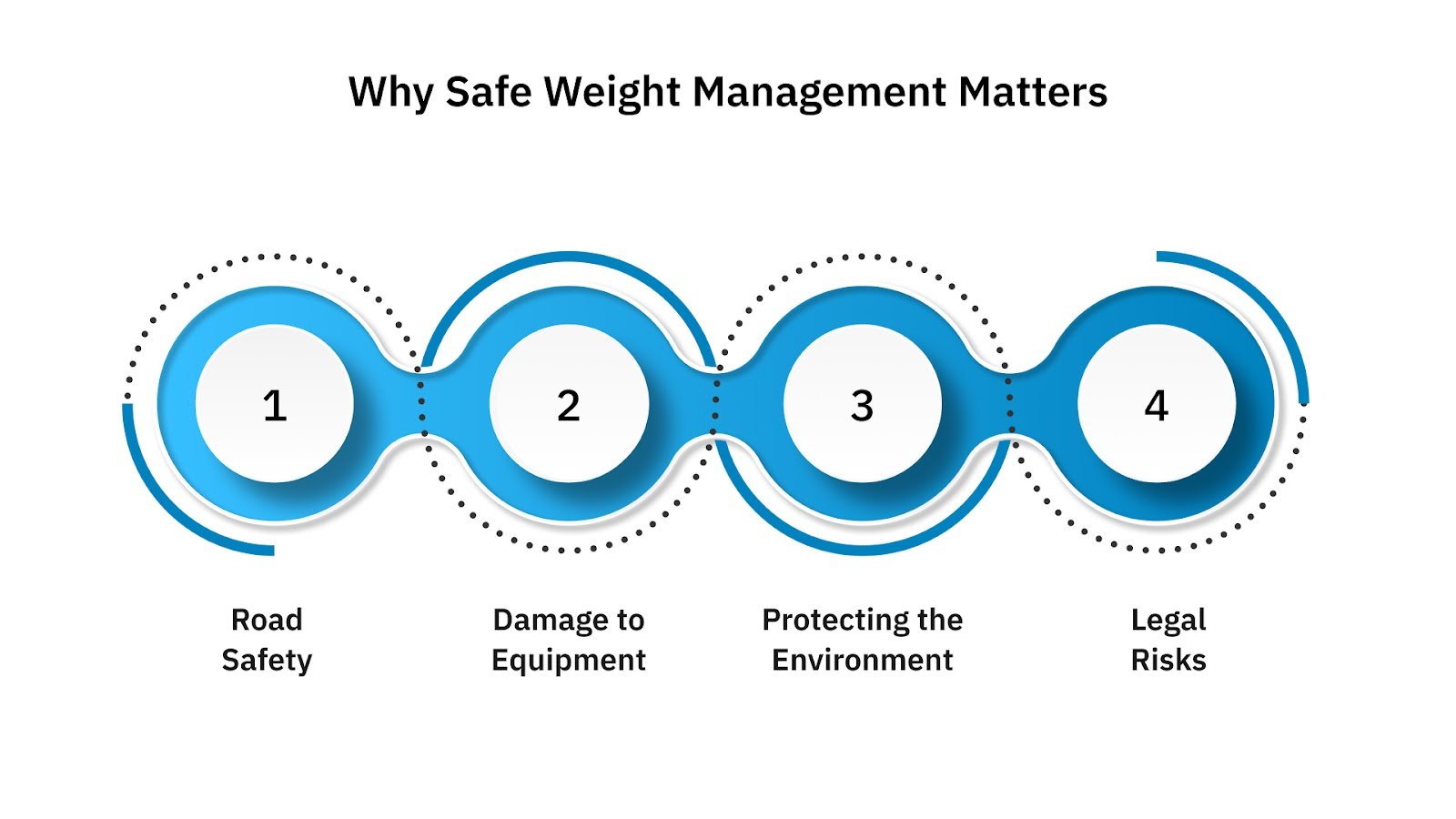
Managing your garbage truck’s weight isn’t just about the numbers; it’s about safety, protecting your equipment, and avoiding trouble.
Safe weight management is key; now, let’s look at the common challenges and how to handle them.
Even with strong trucks and weight rules in place, collecting and hauling waste safely can still be tricky. Here are some common problems drivers face, and what the pros do to handle them:
1. Uneven Loading: If the trash inside isn’t spread out well or compacted properly, it can lean to one side, even if the total weight is within limits. This makes the truck harder to steer and control.
Best Practice: Drivers are trained to pack the waste evenly using the truck’s compaction system. Many trucks also have onboard weight systems to help balance the load in real-time.
2. Overloaded or Broken Bins: Some bins are too full or damaged, which can make them unsafe to lift or much heavier than expected.
Best Practice: A quick look at each bin before lifting can prevent problems. If a bin looks unsafe, it may be skipped or handled later with special care. Safety always comes first.
3. Driver Mistakes or Misjudgments: Even skilled drivers can misjudge how heavy something is or load the truck the wrong way.
Best Practice: Ongoing training helps operators stay sharp. They learn to spot heavy items, estimate weight, and use lift systems properly. Onboard scales also help reduce guesswork.
4. Rushing Through Routes: Trying to stay on schedule may cause some drivers to skip steps or hurry, which can lead to safety issues.
Best Practice: Route planning tools and GPS help drivers stay organized and on time. Companies also remind drivers that safety matters more than speed, and it’s okay to take the extra time to secure each load.
By staying alert and following these smart practices, your team can keep each trip safe and efficient protecting drivers, the public, and your equipment.
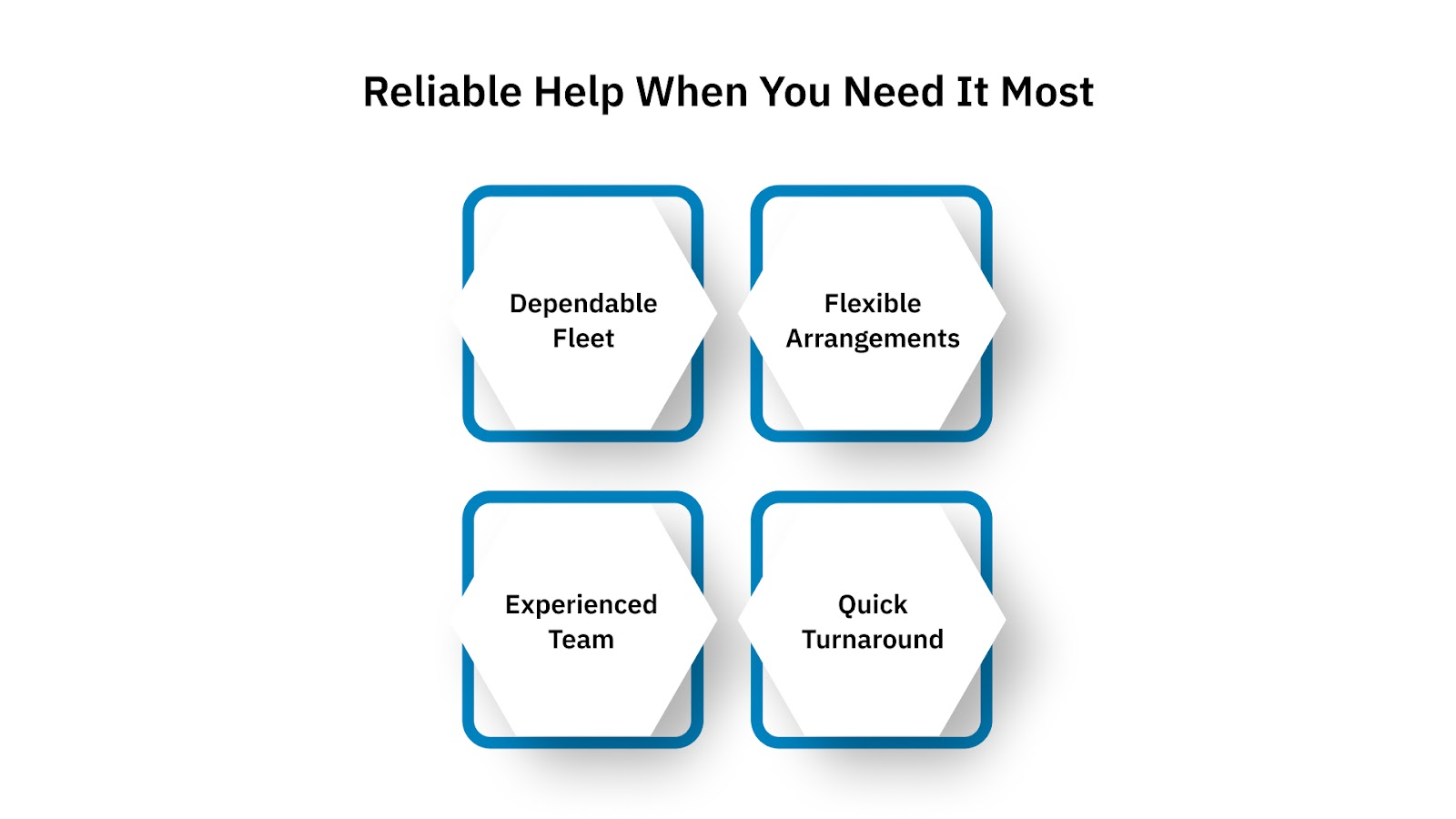
When a truck breaks down or demand spikes, we know how stressful it can be to keep routes on schedule. That's why at Trash Truck Rental, we focus on being a dependable partner you can count on.
We’re not just providing trucks, we're helping you protect your service, your team, and your community.
The next time you see a garbage truck in action, think about how much work it's doing. It's not just picking up trash; it's a well-designed machine handling a challenging and vital job. From lifting heavy bins to carrying tons of waste to disposal sites, these trucks demonstrate the strength and advanced capabilities of today's equipment. Behind it all are skilled crews and innovative systems working together to keep your neighborhood clean and safe. It's quiet work, but it plays a significant role in keeping things running smoothly every day.
At Trash Truck Rental, we understand how much it depends on reliable equipment. That's why we offer flexible lease and purchase options designed to meet different needs and budgets.
If you're unsure what works best for your operation, we invite you to connect with us. Together, we'll explore your options and find the solution that fits you best.
A: A garbage truck’s “lifting capacity” refers to the maximum weight its hydraulic arms or forks can pick up from a single bin or dumpster (e.g., hundreds of pounds for residential bins, several tons for commercial dumpsters). “Carrying capacity,” or payload capacity, is the total weight of compacted waste the truck's body can safely transport, which can range from 8 to 25 tons depending on the truck type.
A: Front-loader garbage trucks generally have the highest payload capacity, often carrying between 12 and 25 tons of compacted waste. They are designed for large commercial and industrial dumpsters, allowing them to handle very heavy loads.
A: Yes, absolutely. Garbage trucks must adhere to strict legal weight limits set by federal and state transportation authorities in the US. These include the Gross Vehicle Weight Rating (GVWR), which is the maximum total weight the truck can be, and specific axle weight limits, which regulate how much weight can be placed on each set of wheels.
A: The density of the waste significantly impacts how quickly a truck reaches its weight limit. Light, bulky items like cardboard might fill a truck's volume before its weight capacity, while dense materials such as wet organic waste, construction debris, or compacted dirt can quickly push the truck to its maximum permissible weight, even if the collection body isn't completely full.
A: Overloading a garbage truck poses serious risks, including compromised road safety (longer stopping distances, reduced control), severe damage to the truck’s components (tires, brakes, suspension, chassis), potential environmental spills, and significant legal penalties like fines or vehicle impoundment.
Ready to Upgrade Your Process Operations?